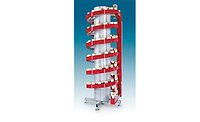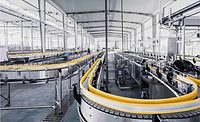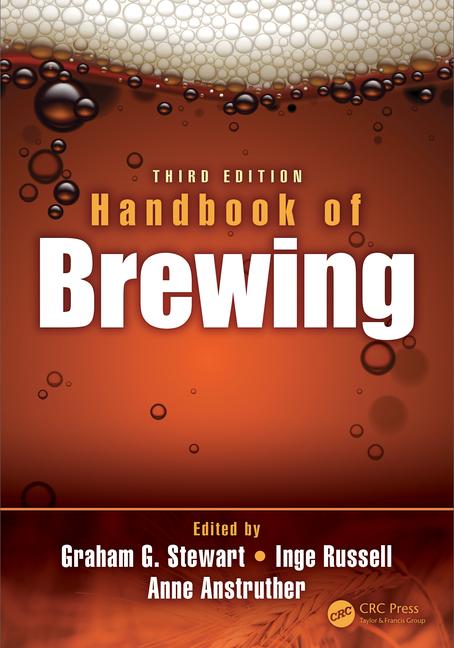Celebrity-centric blog spots have led to a proliferation of rumors — whether true or not — surrounding those in the public eye. Although this sort of proliferation usually is met with disdain and resistance, SKU proliferation within the consumer packaged goods (CPG) market is fueling a marketplace full of choices. In order to accommodate these choices, though, original equipment manufacturers (OEMs) are tasked with developing equipment that can manage all of the benefits and challenges that come along with them.
Suppliers from the conveyor industry understand the impact that SKU proliferation has within the CPG market, including the beverage industry. “Proliferation of SKUs means multiple packages [are] running in the same bottling line,” says Tony Gregory, U.S. manager for Posimat, Doral, Fla. “Conveyors have to be flexible in order to accommodate a large range of bottles, and changeovers have to be quick and simple.”
Pat Vincent, president and chief operating officer of Arrowhead Systems Inc., notes that the increase in the number of SKUs within the beverage industry has brand owners running smaller batch sizes, increasing the need for more frequent changeover, and highlighting the importance of flexibility. To keep up with these demands, the Oshkosh, Wis.-based company has implemented tools within its product line to aid these processes.
“When it comes to flexibility, the use of our single-point adjustable guide rails and recipe-based control programming have been key to successfully providing our customers with solutions,” he says. “These features significantly reduce the amount of time it takes to change from one product to the next. More importantly, the repeatability of specific product setups is greatly enhanced, allowing our customers to maintain consistent throughput from one changeover to the next. These tools have also aided us in the ability to handle the less traditional market of the flexible packages.”
J. Bryan Boyce, product manager for conveyors with Cincinnati-based Intelligrated Inc., also notes the use of automatically adjusted side guides but adds that powered transitions between conveyors and advanced zone control for accumulation are being utilized by OEMs to control packages on the conveyor line.
‘Go, Speed Racer, Go’
As conveyor manufacturers look to address the increase in beverage product changeovers, they also have another variable to take into account: speed.
“I think what we’re seeing is the need to run faster,” says Ole Rygh, president and chief executive officer of Ryson International Inc., Yorktown, Va. “[Beverage manufacturers] like to run faster and [are] looking for higher speeds and are also looking for longer operating hours for running around the clock. I think they’re trying to do more with less equipment.”
Dan Labell, owner and president of Westfalia Technologies Inc., York, Pa., also notes that centralized processes are impacting speed and throughput. “Rates are increasing due to trends toward centralizing distribution — for example, mixing centers that put greater throughput demands on conveying systems,” he says.
When it comes to filling speeds, Labell says this can affect the conditions in which a conveyor system can operate. “Higher filling speeds can often require more accumulation and higher transport speeds to ensure that downstream equipment can ‘take away’ product faster than the filler can supply,” he adds.
For conveying empty bottles, Posimat’s Gregory notes that air conveyors or pneumatic conveyors can accommodate high speeds, instant accumulation and bottle stability. “The highest line speeds can only be handled by air conveyors on the empty side,” he says. “[An] air conveyor does not have a speed cap for the moment.”
Phil Miller, president of Ambaflex Inc., Bedford, Texas, notes that conveyor manufacturers recognize the effects higher throughput rates have on a production process and are developing products to meet those demands.
“The conveyor systems that we supply or other people supply have to be prepared to handle higher speeds, higher volumes and everything else that goes with that in terms of maximizing the new customer’s run time, their up time,” he says. “[Customers need] a better machine that requires less maintenance, or, if there is maintenance, the maintenance can be done quickly so they can maintain these high-speed throughput lines that [manufacturers] are coming out with.”
Although these higher throughputs can help beverage-makers meet production requirements, this focus also raises questions about maintaining the integrity of the finished product as well as the overall process.
“Obviously, the faster the conveyor runs, the harder it is to control the case, maintain case integrity, contain maintenance requirements, and promote long conveyor life,” Intelligrated’s Boyce says. “Using variable frequency drive controllers provides a great way to set conveyor speeds at the minimum required for optimum operation.”
Ambaflex’s Miller also emphasizes the role product integrity plays when it comes to accommodating speed requests. Minimal to no damage to the beverage product and the conveyor system when operating at normal or high speeds is a priority, he adds.
“[Beverage manufacturers] are looking for reliability and to maximize the run time, make sure they’re operational, and [make sure] they can deliver the amount of product that they need to deliver on a daily basis, [as well as] ease of maintenance,” Miller explains. “They don’t want to spend three days trying to maintain a system that they have a problem with or just get rid of regularly scheduled maintenance.”
Relating to reliable equipment, Ryson’s Rygh notes that beverage-makers should consider total cost of ownership when selecting a conveyor system. “All conveyors aren’t equal, and I think the challenge for us is to create awareness that if you want to run fast and run them 24 hours a day, it requires a different quality and different equipment than if you run it once in a while,” he says.
‘Secondary’ concerns
High speeds, though, are not the only challenges affecting package integrity. Conveyor manufacturers are noticing trends within the packaging sector that could have an effect on their processes.
“Reduction in packaging materials continues to be a concern with conveyor choice,” Intelligrated’s Boyce says. “We are seeing not just a reduction in primary packaging material, but secondary packaging is also being reduced. A common packaging change right now is removing bottom fiberboards or trays and using shrink-wrap only as the secondary packaging of PET bottles.”
Arrowhead’s Vincent also has noticed the reduction of secondary and tertiary packaging materials. The company has updated its portfolio to enhance product transferring, case turning, and dividing and converging devices to handle these changes, he explains. “This change has increased the demand for low- and/or zero-back-pressure accumulation systems,” Vincent says.
For the roller-top modular belt, the company offers a low-back-pressure conveyor, and for zero-pressure applications it offers modular lift zones, which raise the product off of the belt, he adds.
Tall order
Although conveyor manufacturers have a number of factors they need to consider relating to manufacturing and storage-and-retrieval processes, products like spiral or vertical conveyors can alleviate space concerns.
“The beverage industry is a big user of spiral conveyors because, No. 1, we can change elevations to go up, and they also need to save space, so we can change elevation in a very small footprint, and we can do it at a very high speed compared to elevators or side grippers or stuff of that nature,” Ryson’s Rygh says.
Ambaflex’s Miller notes that spiral conveyors can be utilized in new warehouses as well as integrated into existing plants. He adds that they have become a mainstay in the beverage industry, whether for accommodating line speeds, individual bottles, or mass flow or for palletizing and depalletizing operations.
“We’re able to do those sorts of things on a spiral in a small footprint, [and] that’s really where they see the biggest advantages,” he says.






